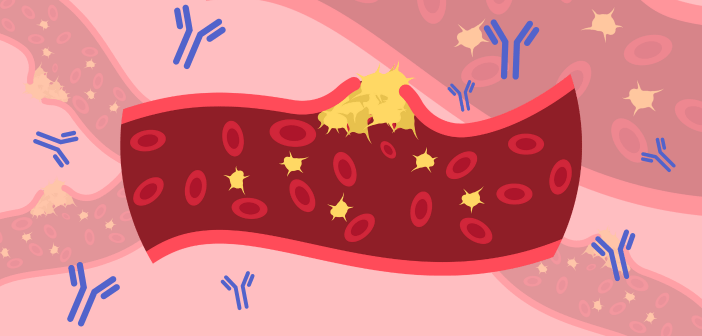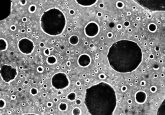The clot twist: when antibodies betray the bloodstream

Researchers have identified a mysterious chronic clotting disorder that defies blood thinners, tracing its cause to specific antibodies.
A new discovery in hematology has shed light on a chronic and severe blood clotting disorder that mysteriously persists despite full-dose blood thinners. A team of international researchers uncovered the underlying cause of this condition, which bears strong similarities to vaccine-induced immune thrombocytopenia and thrombosis (VITT) – a rare and severe immune condition that can be caused by exposure to specific COVID-19 vaccines. Their findings, published in The New England Journal of Medicine, could transform patient testing, diagnosis and treatment.
A blood clotting disorder is a condition in which your blood forms clots too easily. Usually, blood clots form during an injury to prevent bleeding, but clotting disorders can cause too much or too little clotting to occur, even without an injury. This can result in various symptoms, ranging from mild, such as bruising easily, to severe and life-threatening complications, such as heart attack and stroke.
Blood clotting disorders are typically treated with anticoagulant drugs, or blood thinners, but they are ineffective for many patients. Although specific types of blood clotting disorders have been described and characterized, we still don’t fully understand why clots form and why individuals can be resistant to anticoagulants. This new research could flip the script.
You may also be interested in:
- The current status of single-cell proteomics for biomedical research
- FDA approves companion diagnostic for hemophilia B gene therapy
- FDA approved: the first hemophilia A gene therapy authorized for the United States
Led by Professor Ted Warkentin from McMaster University (Ontario, Canada), with key contributions from Dr Jing Jing Wang, Professor Tom Gordon and colleagues from Flinders University (Adelaide, Australia), the team set out to investigate these conditions and their resistance to anticoagulants in greater depth. They identified and described a novel disorder in five patients exhibiting unusual blood clotting despite full-dose anticoagulant treatment. They termed the condition, VITT-like monoclonal gammopathy of thrombotic significance (MGTS), which is characterized by the chronic intermittent occurrence of severe clotting episodes, even without known triggers like heparin exposure or prior vaccination.
Knowing that VITT is closely associated with antibodies that target the coagulation promoting protein platelet factor 4 (PF4), the researchers from McMaster University performed a specialized proteomic analysis of samples from the patients to look for similar pathogenic antibody proteins, or VITT-like antibodies.
The team identified that the VITT-like MGTS patients possessed low-level monoclonal (M) proteins typically linked to plasma cell disorders, which were detectable for at least 12 months. This suggests an ongoing pathological process rather than a short-term issue.
“Low-level serum M (monoclonal) protein are often identified in patients who have VITT-like MGTS,” explained Wang. “By using our proteomic approach developed at Flinders Proteomics Facility, we have proven that the M proteins are the pathological VITT-like antibodies. Despite these M proteins being in relatively low concentrations, they are highly pathological VITT-like proteins, which explain the patients’ severe symptoms.”
Interestingly, although the patients with this condition failed blood-thinning treatments, they responded to unconventional alternative therapies such as high-dose intravenous immunoglobulin and targeted myeloma treatments.
The discovery of VITT-like MGTS marks a significant advance in understanding persistent clotting disorders. By pinpointing the specific antibodies responsible, researchers have opened new pathways for tailored treatment approaches, improving outcomes for affected patients.
With this newfound knowledge, healthcare providers can refine diagnostic methods and explore innovative treatments for chronic clotting disorders. Further research will focus on developing targeted therapies to manage MGTS effectively, ensuring better patient care and advancing the hematology field.






